The 1970’s
While the 1960’s saw some further advances in the techniques of both production sound recording and re-recording, it wasn’t until the 1970’s that some of the nascent technologies developed for music recording began to make inroads into the film industry. Although stereo and surround sound were nothing new (going all the way back to the early 1950’s), the films released in either four-track 35mm Cinemascope mag or six-track 70mm mag were limited to major roadshow titles like 2001: A Space Odyssey and Woodstock. Prints were extremely expensive, and the number of theaters equipped to run either 35mm mag or 70mm were typically limited to major cities. And even with the advent of these technologies, theater loudspeaker systems hadn’t really evolved much past the technologies of the late 1940’s and early 1950’s. Despite the extraordinary quality of 70mm magnetic, the Academy curve was still the norm, with its severe rolloff of high frequencies.
Other changes were beginning to take place in the 1970’s as well. Audiences had become more sophisticated in relation to sound. A new generation of music listeners had become accustom to high-quality home sound systems, FM radio began to take off, the quality of the compact cassette improved, and those with the means invested in recorders to listen to four-track reel-to-reel releases. Audiences of this generation were not going to be satisfied with the sound of a theater system developed two decades ago. Commensurately, theater attendance was in decline, and studios were looking for ways to attract a younger audience.
It was against this backdrop that a number of advances in film sound took place. Most notable among these was the introduction of Dolby noise reduction in the post-production stages (first used on Stanley Kubrick’s A Clockwork Orange in 1971). While the film was originally released in Academy mono (due primarily to Kubrick’s concern regarding how many theaters would be able to play stereo optical), it was clear from the tests done at Elstree Studios that the quality of sound could be markedly improved if the process could be applied to the optical track itself. Further development was done at Dolby Labs over the next few years, which culminated with the release of Lisztomania in 1975 and Star Wars in 1977.
Also notable was the introduction of Sensurround by Universal Studios, which was first used for the movie Earthquake in 1974.
And perhaps most important in the realm of production sound recording, 1975 marked the year that Robert Altman’s movie Nashville was released, significant both for its use of multitrack dialog (with stellar work by mixer Jim Webb), in addition to live multitrack music recording (utilizing a remote truck built by the author).
While multitrack dialog recording was not exactly new per se (having been used for the production of three-channel Cinemascope films), the use of multitrack for production sound would mostly be limited to Robert Altman films for nearly two decades. It did, however, help to spur a move to a more sophisticated approach to production sound, which was still largely done on mono Nagra recorders (despite the introduction of the stereo Nagra 1970).
With the introduction of op-amp technologies, mixer designs began to take on a significant change in design philosophy during the 1970’s. These advances, along with more sophisticated printed circuit board designs and smaller components, made possible more compact mixers with less current draw than their predecessors. It also heralded the adoption of a modular approach to console design, with components separated into input modules, master modules, buss assignment modules, and monitor modules. While these approaches were at first destined for the music and broadcast world, it wasn’t long before they were adopted by manufacturers engaged in designing mixers for the film industry. This was due in no small part to the increase in the channel counts of film dubbing stages, which were beginning to increase with the advent of Dolby stereo in 1975.
The same approach was also used for smaller production sound mixers, with more limited facilities. The 1970’s would also mark an era that would see a more ready adoption of European film sound equipment by US sound mixers. Although companies such as Sennheiser and Neumann had made inroads into the United States with their microphones (primarily for music recording), and Nagra with portable recorders, up until the seventies, if you walked into most film sound operations, nearly everything you saw was of US manufacture.
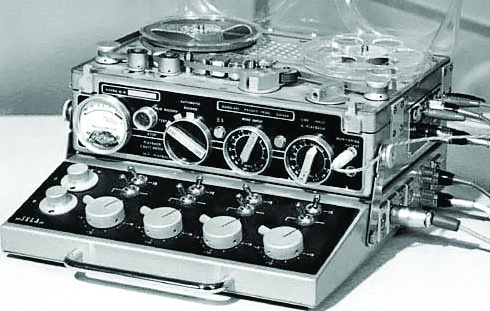
In the early seventies, there were still not many choices when it came to lightweight production mixers (the Nagra BM-T and Sela 2880-BT not withstanding). For stage work, it was still common in Hollywood to see mixers made by both Westrex and RCA dating back at least a decade (with many custom variants) used on set. As the move to location shooting became more prevalent, sound mixers started looking for alternatives to the bulky production boards typically used for stage work.
However, there were some alternatives for those who wanted to take a bit different approach, which in many cases involved doing a bit of customizing. Notable among these were the following:
- The Sennheiser M101 mixer, a four-input, mono-output mixer with built-in battery supply and T power, which was first introduced in 1969, but took a little time to catch on in the US market. Some enterprising individuals would also customize these boards into a six-input configuration.
- The Stellavox AMI mixer, a five-input, two-output mixer introduced in 1971. Designed by former Nagra engineer Georges Quellet, this was intended as a companion piece to the Stellavox SP7 recorder.
- The Audio Developments AD031 “Pico” mixer, which could be supplied in a few different configurations, and utilized a 24-volt power supply.
- The Neve 5422 “suitcase mixer” brought to market in 1977, and intended primarily for use in location music recording and broadcast.
- The Studer 169/269 series mixers, introduced circa 1978, and which could be ordered in a variety of configurations. Intended primarily as a location broadcast console for the European market, this console could be either AC- or battery-powered. While prized for its sonics by music engineers, it was only used by a handful of production mixers in the States (due in no small part to its size and weight).
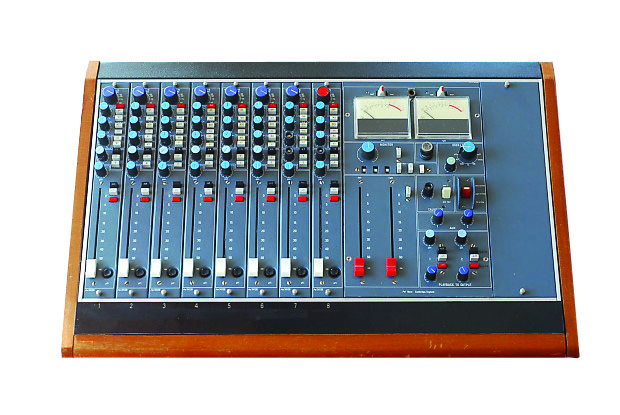
As amplifier technology evolved and components became smaller, it allowed designers the luxury of adding more features, including three-band equalization, better high-pass filters, better mic preamps, and more sophisticated signal routing. It also marked the move away from the traditional four-input mixer, which had dominated production sound recording for nearly four decades. Still, production sound equipment had to be portable, which limited the sort of features that would be found standard on even fairly rudimentary re-recording consoles of the period.
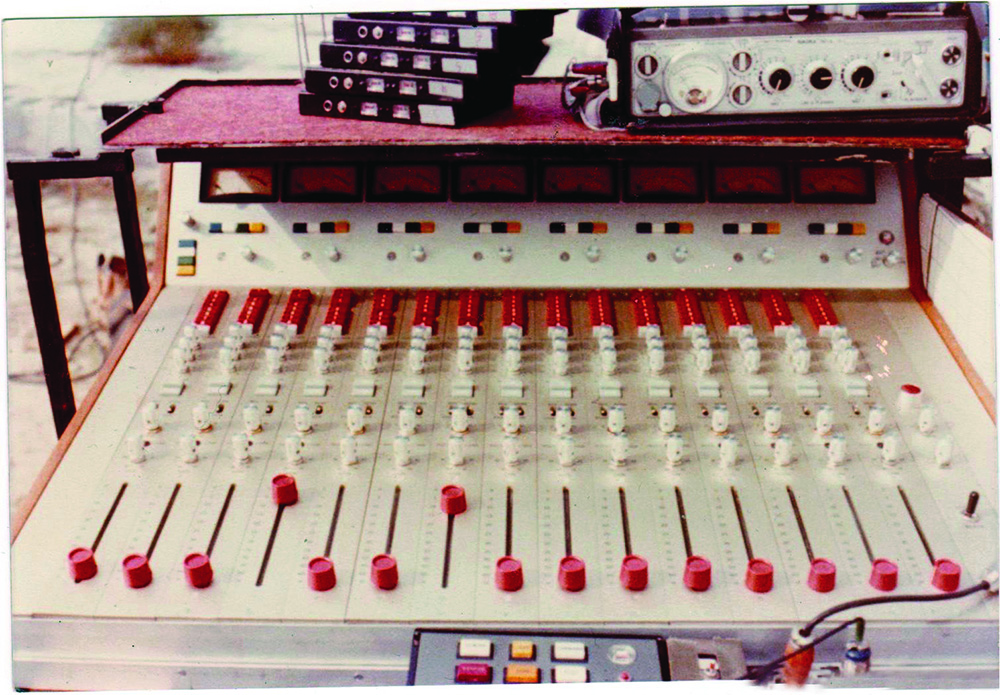
A (very few) ambitious sound mixers also took it upon themselves to build or commission mixers to their liking from scratch or perform significant modifications to mixers that were designed for other purposes.
The 1970’s also saw an extensive adoption of straight-line faders, which had moved from wire-wound designs to carbon composition resistive elements. While early straight-line faders were prone to problems when used under unfavorable conditions, the new faders were both smaller and more reliable. In addition, sound mixers who began their careers in music recording or post production were more receptive to using them for production work. By the end of the decade, nobody except Sela were manufacturing location mixers with rotary faders.
The 1980’s
Despite the fact that the seventies saw a host of developments in film sound recording, it didn’t translate into very many changes in the sound mixing techniques and equipment used for production work. Most of the advances made in the previous decade were in the area of re-recording, as well as the advent of Dolby Stereo on optical tracks (Stereo Variable Area), which allowed studios to release titles in L/C/R/S stereo without the need for four-track magnetic release prints. Since the optical tracks could be printed and processed on standard laboratory equipment, it greatly reduced the costs associated with making a stereo release.
As such (with the notable exception of Robert Altman), most production sound packages still consisted of a four- or six-input mixer, perhaps mated with a Nagra stereo recorder with Dolby noise reduction, and four channels of wireless. And for most productions, this was sufficient. Even with the introduction of the Sony PCM-F1 in 1981 and DAT in 1987 (both being two-channel formats), there was no compelling reason to change the basic approach used for production recording.
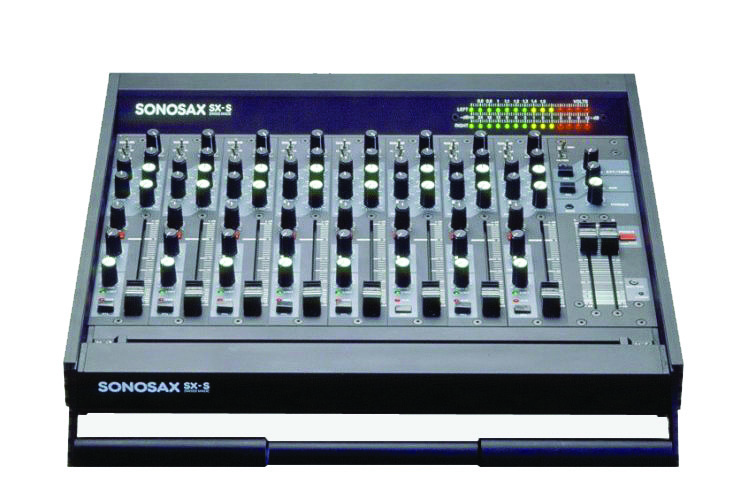
While some sound mixers (including this author) opted to use somewhat larger consoles intended for broadcast and remote music recording, there weren’t really many options available to the industry until the introduction of the Sonosax SX-S in 1983, and the Cooper CS-106 mixer in 1989. Like most equipment destined for the highly specialized film market, these mixers were designed by individuals who had a dedication to producing high-quality sound recording equipment specifically for the film industry.
The Sonosax SX-S mixer was the brainchild of Swiss engineer Jacques Sax, who had begun his career as a live sound mixer. Frustrated with what was available on the market at the time, he took it upon himself to design something that was more to his liking, beginning with the SX-B mixer in 1980, and culminating with the current SX-ST series consoles.
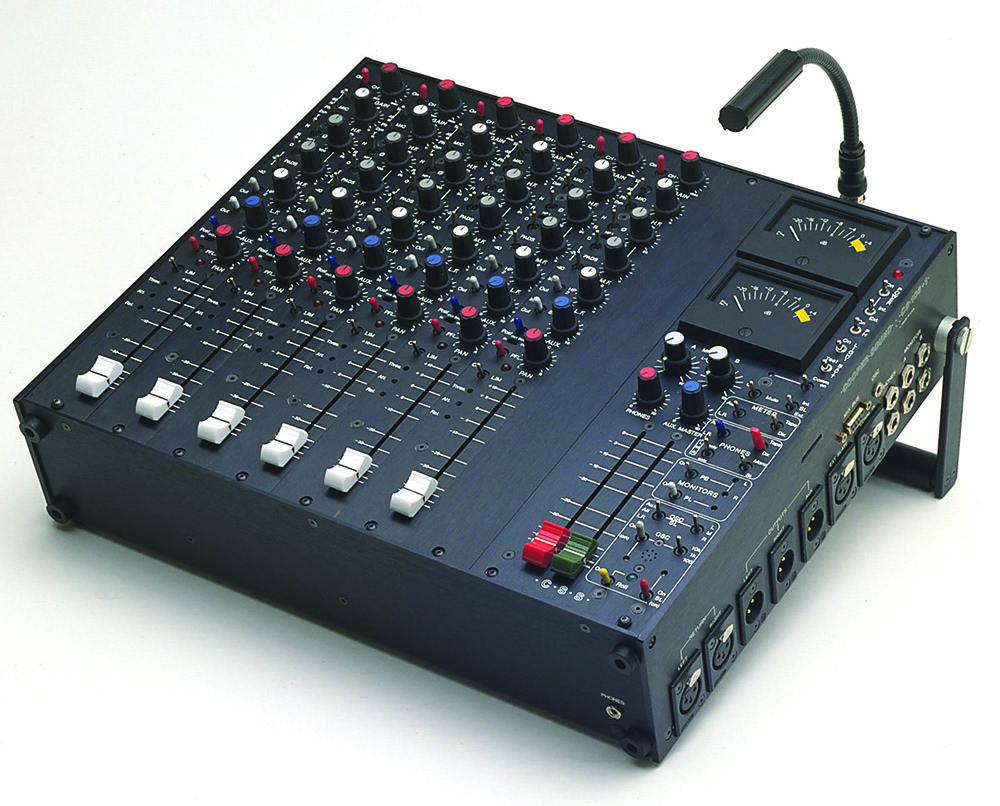
The Cooper 106 was designed and built by Andy Cooper, who besides being a bright designer, was also cognizant of the particular needs of the film production market. So instead of designing something that he “thought” represented the needs of production mixers, he actually went out and took the time to talk with notable mixers of the era (a lesson that some manufacturers still have yet to learn).
The Cooper CS-106 marked a fairly significant departure from anything else available at the time. With straight-line faders, the option for seven inputs, three-band EQ, a lightweight chassis, DC powering, sophisticated monitoring and signal routing functions, the Cooper mixer embodied much of what production mixers had been looking for at the time.
Film sound being a very small slice of the overall worldwide audio market, larger manufacturers simply weren’t interested in developing a highly labor- and design-intensive console for a small market segment, when there were much bigger rewards to be reaped in the studio, sound reinforcement, and broadcast markets. Many of the consoles built by Sonosax and Cooper Sound are still in use nearly three decades later, which attests to Jacques and Andy’s strengths as careful designers who understood the rigors of film production.
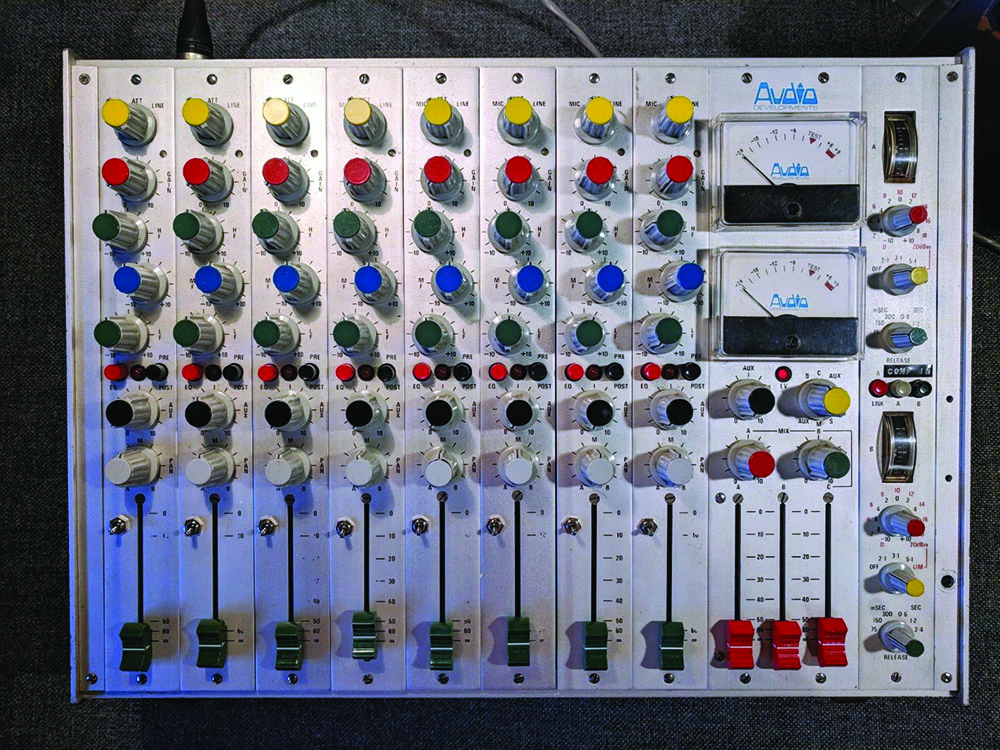
There were of course, other options available in the eighties. Audio Developments continued with their line of portable mixers, which included the AD 062 and AD 075 series. Sony actually introduced a twelve-input mixer, the MXP-61, which had some features such as 12-volt T-powered mic inputs, which were clearly aimed at the film production market, but didn’t generate a lot of sales.
There were also some entries in the portable “bag rig” market, most notably by the British company SQN, which introduced the SQN-4S mixer.
Being the highly individual craft that production recording is, many sound mixers weren’t content with what was offered on the commercial market, and opted to design something that suited their personal approach to production recording, or make extensive modifications to stock consoles. Not everyone who sat at a mixing board had the kind of electronic background to undertake this sort of task however.

Highly customized mixer designed and built by Bruce Bisenz in the 1980’s, utilizing Nagra mic preamps. Note the modified Altec graphic equalizer, with one octave band intended for dialog EQ, and the group buss assignments. Photo courtesy Bruce Bisenz
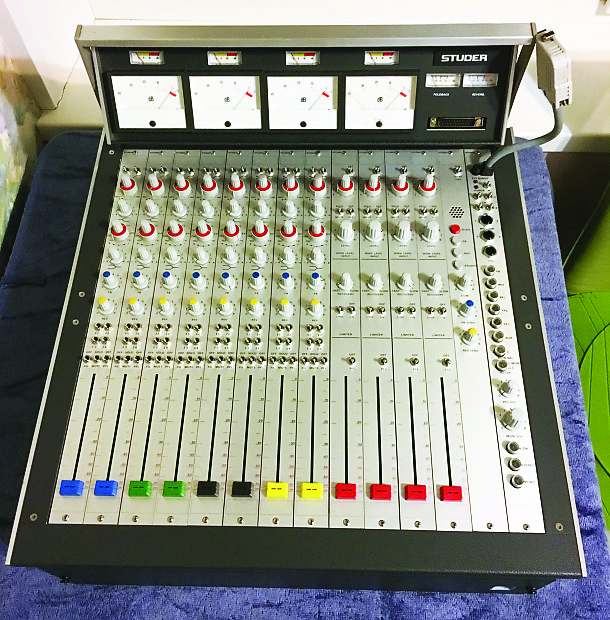
Among the few who took on this challenge during the seventies and eighties include David Ronne, an Academy Award-winning production mixer (who also designed the RollLogic remote control). Bruce Bisenz, who built a highly customized console from the ground up, and Jim Webb, who commissioned a console to his liking that was built by Jack Cashin. The list goes on…
There were also sound mixers such as Nelson Stoll, Ray Cymoszinski, Michael Evje, and others who decided they loved the big sound of the Neve consoles, and took it upon themselves to modify the boards to their liking for film work. Others (including the author) opted for the modular configurations offered by the Studer 169/269 series consoles.
The important thing to note in this regard is that every one of these sound mixers had a particular approach to the challenges of doing production sound under all kinds of conditions, and wanted a console that would give them the most flexibility and best sound quality for their style. In a world that has now become defined by the stock offering of various manufacturers, the “signature sound” that many mixers had sought to achieve during this period has now become lost.
Next up, “The Nineties.”
–Scott D. Smith CAS
With sincere appreciation to Jeff Wexler CAS for invaluable contributions in style and content.